Looking for a beautiful houseplant that requires low care and looks exceptional too? You can grow different Types of Dieffenbachia for this purpose!
Dieffenbachia, also known as the dumb cane, this easy-to-grow houseplant is perfect for homes and offices. This old-time favorite indoor plant features lush blue-green, chartreuse-gold foliage with yellow, white, or cream spots. If you also want to add it to your plant collection, then read about the different Types of Dieffenbachia in this article.
Check out our article on how to grow dieffenbachia from cuttings
Best Types of Dieffenbachia Plants
1. Dieffenbachia ‘Camille’
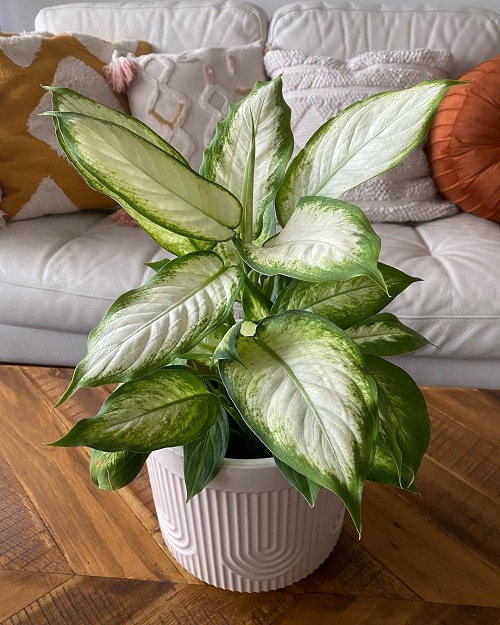
‘Camille’ grows broad leaves with a lime-colored center and dark green edges. This dumb cane variety thrives in full to partial shade in well-drained soil. Keep the plant well watered and allow it to dry between the watering schedules.
2. Dieffenbachia ‘Camouflage’

‘Camouflage’ has appealing light green leaves with cream veins that make it stand out strikingly. It prefers dappled sunlight or partial shade, though the plant can survive in the full shade too.
3. Dieffenbachia maculata ‘Tropical tiki’
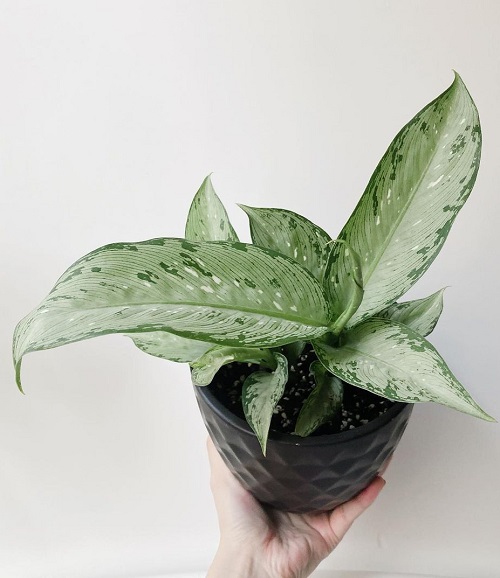
Dieffenbachia macula features upright green-edged leaves with cream color blotches. It has a shrub-like growth on multiple stems and attains a height of 4-7 feet.
4. Dieffenbachia ‘Seguine’
Dieffenbachia ‘seguine’ is an ornamental houseplant with a cane-like stem and white-cream large leaves that length up to 12 inches. When grown in optimal conditions, it displays showy white flowers, too, somewhat like peace lilies.
5. Dieffenbachia ‘Carina’
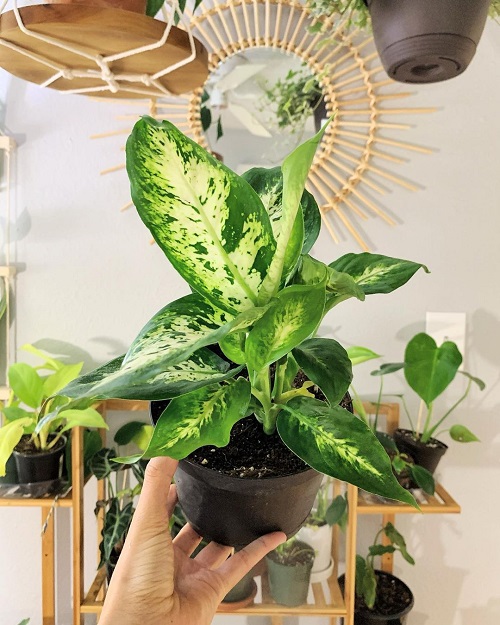
‘Carina’ produces medium-sized green leaves, decorated with a light green shade like other dieffenbachias. It grows up to a length of 15-20 inches approximately.
6. Dieffenbachia ‘Compacta’
‘Compacta’ is a perfect houseplant variety that can also purify the indoor air. It grows light green leaves, dotted strongly with cream-yellow shade in the center. You can display this compact variety on the tabletop!
7. Dieffenbachia ‘Delilah’
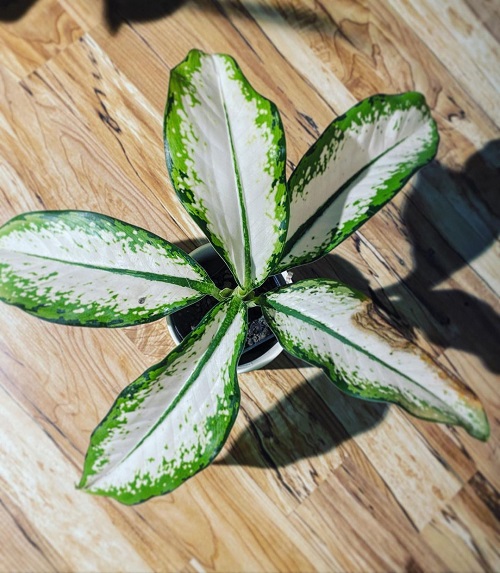
This dieffenbachia variety has big pointy leaves with usual green edges and lovely greenish-white patches in the center.
8. Dieffenbachia ‘Honeydew’

This eye-catching dieffenbachia variety produces golden-yellow leaves with green borders. Its foliage is quite striking, making it a perfect plant for your living room!
How to Grow a Big and Tall Dieffenbachia Like a Tree
9. Dieffenbachia ‘Mary’
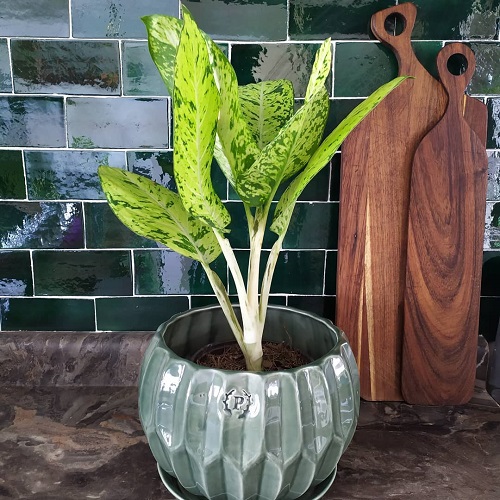
‘Mary’ is a fast-growing dieffenbachia. It displays green leaves mottled with white spots. It’s perfect for brightening up any dull corner of your room!
10. Dieffenbachia ‘Tropic Snow’
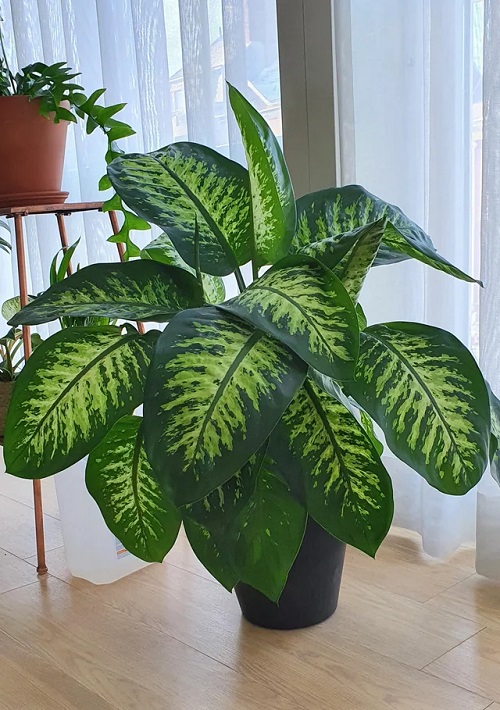
‘Tropic Snow’ is one of the most common types of dieffenbachias. With ovate leaves, mottled with the shades of white or yellow, it is quite a ‘handsome‘ plant to have in your room!
11. Dieffenbachia ‘Snow’
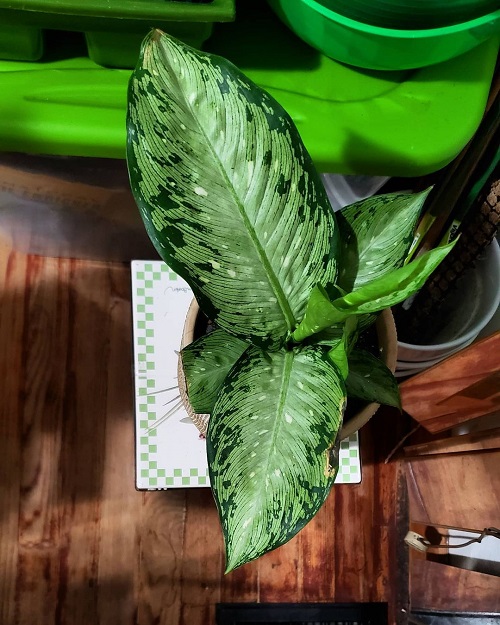
‘Snow’ is a big variety that reaches up to 4-5 feet tall and produces dark green variegated leaves with cream-white, silver-green spots.
12. Dieffenbachia ‘Sarah’
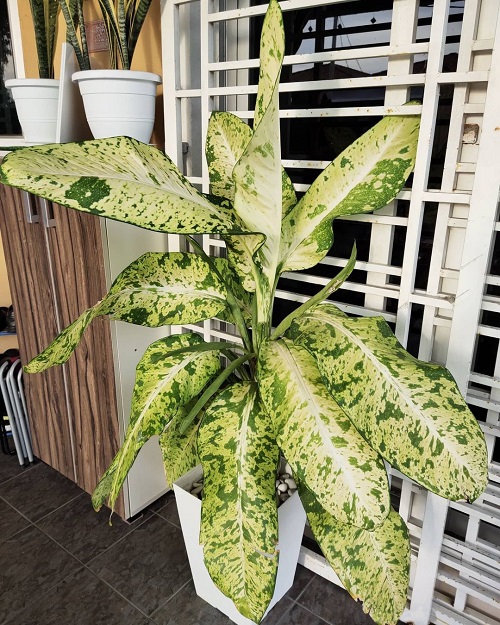
‘Sarah’ is an excellent indoor plant, exhibiting beautifully variegated leaves, with green edges and irregular cream patches towards the center.
Have a look at the best Dieffenbachias here
13. Dieffenbachia ‘Sparkle’

‘Sparkle’ dieffenbachia shows off light green leaves blotched with dark green and white patches like pothos. It attains a height of 3 to 4 feet.
14. Dieffenbachia ‘Star bright’
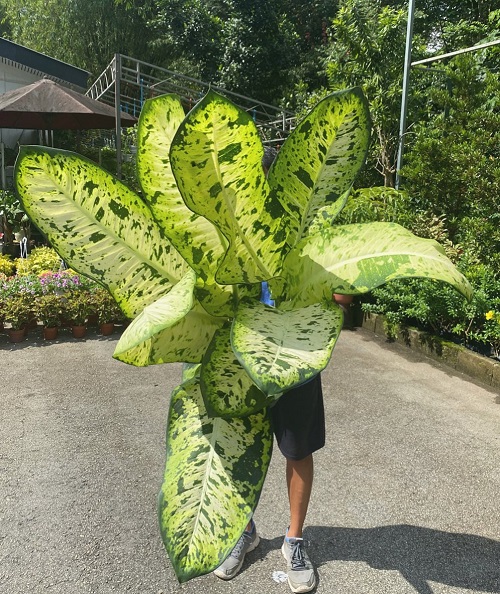
‘Star bright’ narrow leaves compared to the other dieffenbachia variety. It is an ideal houseplant, especially for a bathroom, with golden-green leaves mottled in a dark green shade.
15. Dieffenbachia ‘Tropic Marianne’
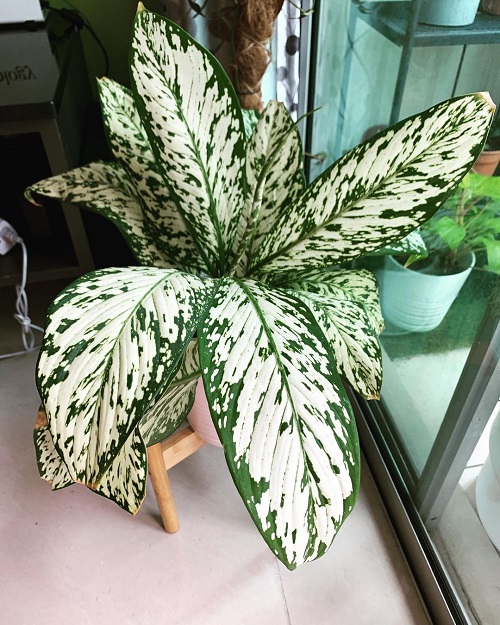
‘Tropic Marianne’ forms hosta-type, oblong cream leaves, bordered with deep green color. In optimum growing conditions, the leaves can be 12 inches broad.
16. Dieffenbachia ‘White Etna’

‘White Etna’ features a spectacular splash of white flecks and green variegation on its large, paddle-shaped leaves. It is easy to grow and does well in low light.
Some amazing benefits of growing Dieffenbachia
17. Dieffenbachia ‘Puerto Rico Variegated’

The lance-like leaves of the plant have a light green hue, dark green edges, and beautiful variegation in yellow tinge. The plant does well in full sun and shade makes the foliage turn total green.
18. Dieffenbachia ‘Tropic Rain’
The large, light green leaves of this plant feature tiny spots and freckles of white hues. Keep it at a spot where it gets plenty of indirect light and lots of humidity.
19. Dieffenbachia ‘Panther’
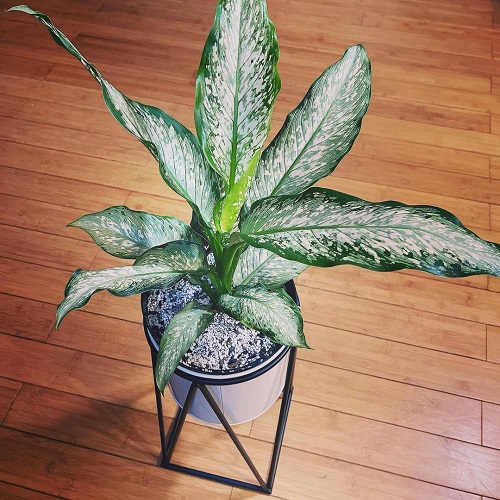
A fast-growing specimen, it features large dark green leaves with white-silver streaks. The foliage can grow up to an impressive length of 10-16 inches.
Get the best Dieffenbachia Care Tips here
20. Dieffenbachia Amoena
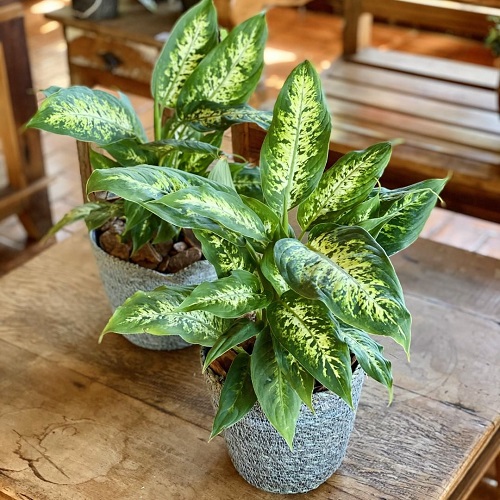
Cultivated for its decorative foliage, Amoena shows large oblong dark green leaves with creamy yellow stripes along the veins.
21. Dieffenbachia Aurora

A shade-loving cultivar that shows large dark green foliage with uneven patches of lime yellow and green. This plant can easily be propagated through cuttings.
22. Dieffenbachia daguensis
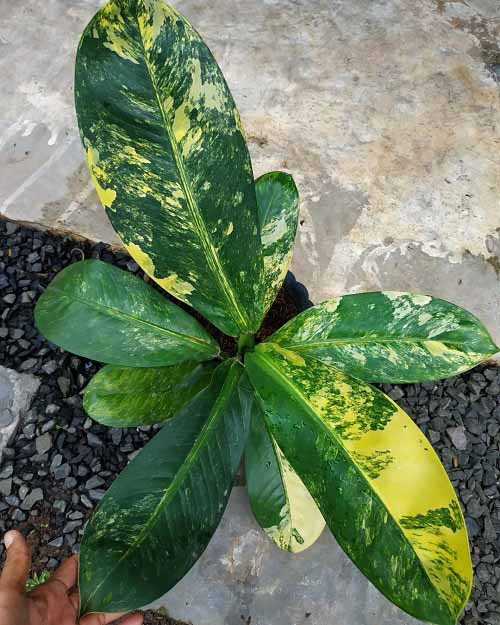
A rare cultivar with uneven yellow and cream splotches that go well with its dark green foliage. The leaves are elongated in shape.
23. Dieffenbachia ‘Triumph’
‘Triumph’ is the most impressive dieffenbachia variety that flaunts lime green leaves and dark green borders, with white veins in the middle of every leaf.
18 Fast Growing Indoor Plants | What Plants Grow Fast Indoors?
24. Dieffenbachia Rebecca

One of the most popular varieties these days, grow this plant if you love the bold variegation on leaves with matching bright colors!
25. Dieffenbachia ‘Cheetah’
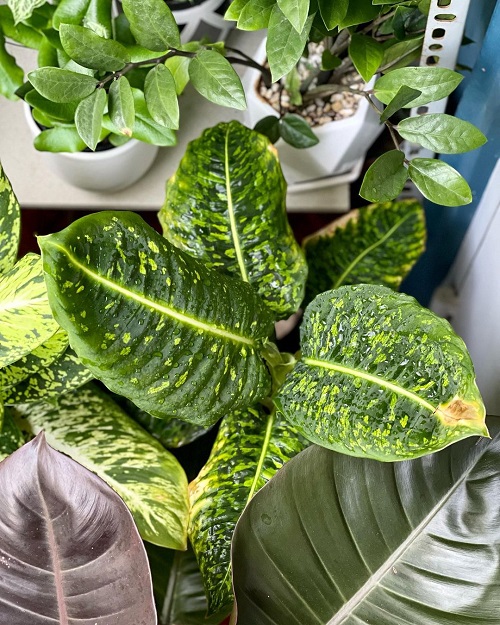
‘Cheetah’ boasts vibrant green leaves patterned with intricate, creamy-white speckles. The splotches often appear as if they were “painted on,” giving it a unique, eye-catching aesthetic.
Read about the Dieffenbachia Cheetah Plant Care and Growing Information
26. Dieffenbachia ‘Memoria corsii’

‘Memoria Corsii’ features elongated leaves with a mix of green and cream colors. These leaves may appear to have a lighter cream color that transitions into a darker green towards the margins.
Dieffenbachia Memoria Corsii Care and Growing Guide
Dieffenbachia Growing Information
The plant grows best in partial shade and prefers a warm temperature range. It faces difficulty below 50 F (10 C). It loves well-drained soil mix and grows best in a container with proper drainage holes. Most varieties can reach up to 3-6 feet tall and spread 1-3 feet.
Tip: Nourish the plant with balanced liquid fertilizer in its active growth period once every 4-5 weeks.
Warning
Keep in mind that all dieffenbachia varieties contain oxalic acid, that may cause skin allergy after physical contact if you’re sensitive. It is advisable to keep the plant away from the reach of curious pets and kids if there’s a risk of ingestion.



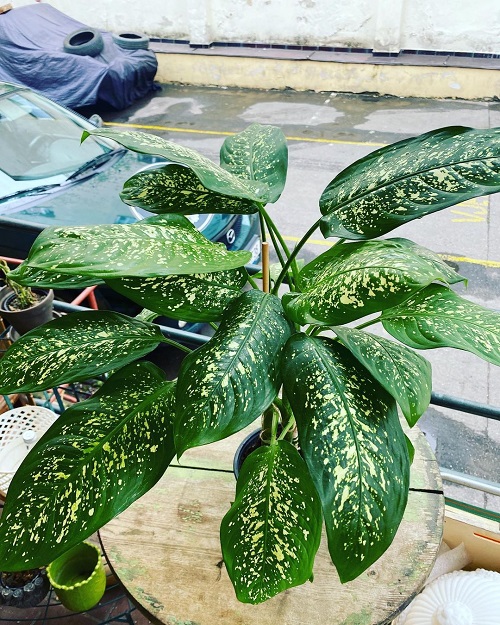
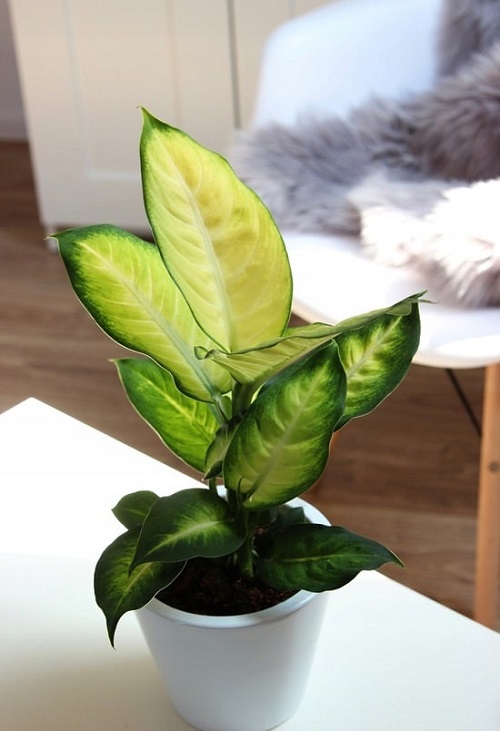

I don’t think so, the second one in the list is all yellow in the middle unlike the first one having white there.
I was saying the same thing
i have a dumbcane of two varieties..the tropic marianne and triump in one stem..however my specific concern is that the stem is too long that the leaves tends to bow .can i cut the stem even without the roots and have it planted again.will they survive.
I saw a YouTube video how to do this recently wish I saved it
Have you heard about Dieffenbachia Rex?
Does it still exist?
it should start to grow! look up dumb cane propagation on youtube :)
Tip cuttings root easily in water. It is not advised to grow them this way, but normally as soon as roots start to develop plant them in a potting mix. Keeping high humidity by covering with a bag or a dome is helpful as it prevents the leaves from wilting, giving the plant mores time to establish a healthy root system. The bottom part of the cuttings should be a mature one with the top exposed nodes under the bottom leaves.
Stem cuttings – Your cutting may look too tall and you may take-out chunks from the bottom part. These segments should contain a few nodes. Leaving something like two nodes below soil level is essential. Roots will develop from these nodes. The stem cuttings don’t have leaves and are less susceptible to drying. However, a word of caution, these stems take MUCH longer to root. If you have lots of offsets and branches, taking cuttings or offsets is much better.
Stumps left over from cutting the top are also good and should not be thrown away. These are just like stem cuttings, but already with roots. They may send new side shoots more quickly than stem cuttings. Plus, you don’t have the risk of planting the stem cutting upside-down and ending-up with no rooting whatsoever.
I’m new to growing dumb canes. My plant has a leaf that looks like it rusty. Do you have any suggestions? I think it’s the “Mary”.
Where’s the pic for “Rebecca”?
You left out D. “Mary Alice”
I can’t find the type mine is even though it looks closely like several. Mine seems to grow off shoots about every foot of the 8 foot stalk. I have cut it off from the top several tight no matter how I try to root these it fails? I’m afraid to cut the ones coming off the stalk at the side’s. Can anyone give me advice? I can send pics if it will help?
Nice..